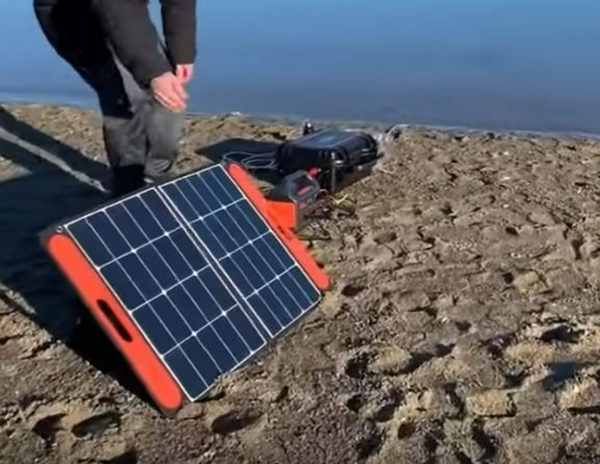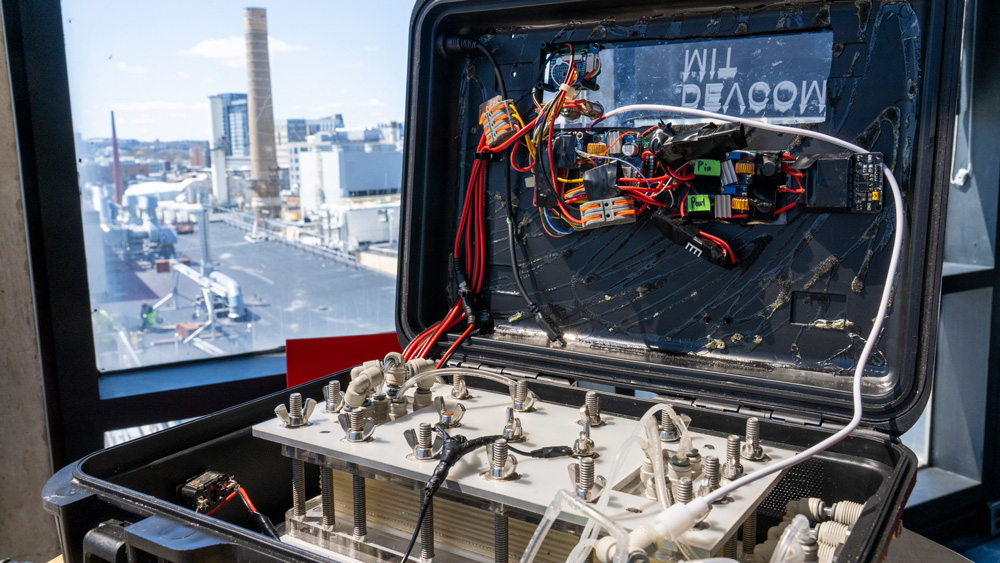Scientists at the Massachusetts Institute of Technology (MIT) have built a portable seawater desalination system for the production of drinkable water in remote locations, without connection to the electricity network.
The system consists of a controller, pumps, and a battery and is embedded into a portable unit weighing 9.25 kg and measuring 42 cm × 33.5 cm × 19 cm. It can produce 0.33 liters per hour and can be controlled by a smartphone.
The researchers used artificial intelligence to improve the device's ion concentration polarization (ICP) technique, which in the proposed system applies an electrical field to membranes placed above and below a channel of water.
“The membranes repel positively or negatively charged particles – including salt molecules, bacteria, and viruses – as they flow past,” they explained. “The charged particles are funneled into a second stream of water that is eventually discharged.”

Image: Massachusetts Institute of Technology (MIT)
They said this improvement removes both dissolved and suspended solids and enables the system to require lower energy consumption, as it only needs a low-pressure pump. They also used electrodialysis, which is a process for the separation of ions in saline solutions, to remove the remaining salt ions that the ICP process is unable to eliminate.
“The optimal setup includes a two-stage ICP process, with water flowing through six modules in the first stage then through three in the second stage, followed by a single electrodialysis process,” they said.
The academics tested the device at Boston’s Carson Beach, using water with different salinity and turbidity levels. They found it is able to desalinate brackish water and seawater into drinkable water.
“In addition, the process can also reduce suspended solids by at least a factor of 10 from the source water, resulting in crystal clear water (<1 NTU) even from the source water with turbidity higher than 30 NTU,” they said.
The prototype only requires 20 W of power per liter. “Right now, we are pushing our research to scale up that production rate,” said the MIT researchers. They presented the device in “Portable Seawater Desalination System for Generating Drinkable Water in Remote Locations,” which was recently published in ACS Publications.
This content is protected by copyright and may not be reused. If you want to cooperate with us and would like to reuse some of our content, please contact: editors@pv-magazine.com.




By submitting this form you agree to pv magazine using your data for the purposes of publishing your comment.
Your personal data will only be disclosed or otherwise transmitted to third parties for the purposes of spam filtering or if this is necessary for technical maintenance of the website. Any other transfer to third parties will not take place unless this is justified on the basis of applicable data protection regulations or if pv magazine is legally obliged to do so.
You may revoke this consent at any time with effect for the future, in which case your personal data will be deleted immediately. Otherwise, your data will be deleted if pv magazine has processed your request or the purpose of data storage is fulfilled.
Further information on data privacy can be found in our Data Protection Policy.